Twelve Hours Away from the Faux and Deadly Mean/Meaningless Fucked up Western News
... and I am sure that the same black face shit and Jewish Death Spiral shit just kept on ticking like that global timebomb about to blow us all up, motherfuckers
Drumming in the dancers:
The Confederated Tribes of Siletz Indians hosts and invites all to come join & celebrate our annual Nesika Illahee Pow-Wow. Our celebration takes place in the heart of the Siletz reservation in the town of Siletz, Oregon. Every summer during the second weekend in August, Native & Non-Native people from all over the United States & further gather here to take part in our annual Nesika Illahee Pow-Wow.
For three days our community, situated on the central Oregon coast is transformed. On display is traditional dancing, drumming, and singing from all over Indigenous America and further. Our gathering has an array of vendors that represents the many facets of Indigenous American Arts, Crafts and Cuisine. The Pauline Ricks Memorial Pow-Wow grounds on Government Hill becomes the beating heart of our community.
A 1.1 million-acre reservation was established by President Franklin Pierce on November 9, 1855, fulfilling the stipulations of eight treaties. Over time, reservation lands were taken away, and CTSI was terminated as a tribe in 1954. In 1977, CTSI was the second tribe in the nation to achieve restoration.
History COUNTS, and as we see, the Palestinians have been denied humanity, and now the Jewish freaks have colonized most people’s minds. Yep, the reservation people are always paying tribute to the veterans and the Old Glory. But . . . They are fucking Palestinians in the minds of the Anglo-Franco-Iberian-Germanic-Saxon-Judaic.
+—+
A good one below, verbatim.
Dead Horses: The complicated education of a White person growing up among the Siletz
Born in a tiny hospital overlooking Alsea Bay and the Pacific Ocean, I entered the world on an unusual snowy night. My father was home on leave and scheduled to serve the US Army Air Corps in faraway Alaska, where Japanese troops had occupied a pair of remote islands. I didn’t know any of that, of course. I wasn’t aware that my mother and I were living with her parents and her two youngest sisters. Nor was I aware when that house burned to the ground six weeks later. I’m told my twelve-year-old aunt ran back into the house to rescue me and the family dog.
Grandpa, who had been a commercial fisherman on Alsea Bay for many years, had finally succumbed to competition from sport fishermen and taken a sawmill job in the Siletz country. We moved to be with him in a tiny, two-room house that had been a neighborhood schoolhouse in early reservation days. Eventually, he was able to build a new home on a beautiful plot of land that had been part of the original Siletz Reservation, also called the Coast Reservation. The property was divided by the gravel road that ran from the City of Siletz (formerly known as “Agency Farm”) east toward the Upper Farm/Logsden area. My father sent money home to purchase the property on the north side of the highway, where I eventually lived with my parents and my four siblings, mostly oblivious to the historic world I had been carried into. It would be decades before I began to understand the horrific history of the Confederated Tribes of Siletz Indians.
In 1856, nearly thirty tribes and bands were forced from their homelands in Southern Oregon, Northern California, and the Willamette Valley after being defeated by US troops sent to clear out the people they considered savages to make way for miners, settlers, and so-called pioneers eager to get the free land stolen from the tribes.
Deceived by the promises made in treaties, the battered, despondent, sick, and starving people arrived in the valley of the Siletz River to find no homes, no supplies. Many of the people were, if not enemies, harboring old hostilities.
In their former homelands, mostly centered around the Rogue Valley and Rogue River area on or near the southern coast, the tribes were free. In The People Are Dancing Again: The History of the Siletz Tribe of Western Oregon, Charles Wilkinson wrote, “Western Oregon Indians understandably revered these landscapes that fed their people . . . and they had their sovereignty, their right to follow their own star, the self-determination for which indigenous and ethnic cultures the world over yearned. All this stood in the starkest contrast to what was to come.”
There was nothing in Siletz of the old freedoms. No way to protect or feed the families. No shelters. Though the river and streams teemed with fish, crawdads, and eels, and the forest sheltered plenty of deer that would provide venison for the starving people, the tribes were denied any rights to hunting or fishing. They were to assimilate into White culture, and the government seemed to believe the first step was for them to become potato farmers.
Those early years must have been horrific beyond description. In 1862, six years after arriving on the new reservation, Chief George of the Sixes Tribe told a visiting government representative, “Our people have had to eat frozen potatoes, that are rotten, and the carcasses of dead horses. They are dying very fast, and my heart is sick. I think rotten potatoes are not good for any people.”
Six years! The tribes that had thrived upon hunting, fishing, and gathering had no experience farming, and fields often failed. Treaties remained unsigned by the US government. Food was sparse and seldom arrived. William, chief of the Chetco Tribe, reported that when a supply of flour arrived at Fort Hoskins, at the eastern edge of the one-million-plus-acre reservation, or at Depot Slough, nearly ten miles from Siletz, tribal women were “packed like mules” to carry it to the Siletz agency.
After the chiefs made their complaints in 1862, the agent approved some passes for hunting on their ancestral lands. But then a ruthless new agent, Ben Simpson, arrived, and he had other plans. There was much suffering by those whom he whipped for violations.
Some of the people had made homes near the Yaquina Bay (now Newport), where they could gather Native foods like crab, clams, perch, oysters, mussels, and salmon. Conniving settlers wanted access to the harbor. Senator James Nesmith, a former Superintendent of Indian Affairs, lied to the Secretary of the Interior and President Andrew Johnson, saying the bay was not used or needed by the people of the reservation. In 1864 the government stole 300 square miles of the Coast Reservation. It was the beginning of numerous similar thefts by the federal government: in 1875, the Siletz Reservation was reduced to 225,000 acres; then, the General Allotment Act of 1887 forced the Siletz people to sell 192,000 acres.
Each loss of reservation lands meant loss of Native access to the foods on those lands. It also meant loss of access to materials for the basket weaving that provided utensils for the tribal homes and a livelihood for the weavers. When the massive theft of reservation lands was finished, the tribes were left with a miniscule land base held in trust by the same government that had done the stealing.
I learned nothing of this history in school. The establishment and taking of the Coast Reservation was long forgotten by the writers of Oregon’s school textbooks by the time I grew up on the section known as the Siletz Reservation.
A textbook approved for Lincoln County’s eighth graders in 1949, and still used when I was in that grade eight years later, spoke of Indians as people of the past: “the Indian is known only as he lived and worked and hunted and played when the white man first came.” (Philip H. Parrish, Historic Oregon.)
Parrish painted a grotesque picture of Native life: “The Indians boiled most of their food. They had baskets woven so tightly they would hold water. Into the baskets, filled with water and pieces of salmon, the red housewives would drop hot stones from the fireplace. . . . The men ate first. . . . A white man who knew Indian lodges well wrote that when the fires were lighted and the men, women, and children crowded inside, the place looked like a witches’ cave.”
Parrish concluded with one last insult: “and through all was the smell—the awful smell of the Indian lodge.”
Imagine being a tribal teen in a 1950s public school classroom on a reservation, surrounded by your friends, White and Indian, reading or listening to such descriptions.
My mother’s eldest brother, Mutt, married a Hupa tribal member. Phonola was from a California tribe but had spent most of her adult life in Siletz or north in Tillamook County, where she often was the deckhand on my uncle’s commercial fishing boats, Ella Mae and Phonola. When Dad returned at the end of World War II, he went back to his former job at Boeing, in Washington, and took my mother with him; Auntie Phonola raised me until they returned. According to family lore, they only reclaimed me when my grandfather gave them an ultimatum to either return or “give the baby to Auntie.”
Auntie remained a significant part of my life until she died in a car wreck, years after my own daughters were born. I wonder how much she instilled her culture into me in the years she had me as a tiny child. I know I ate fry bread and fresh or canned salmon at her home. In later years, she often spoke to me about “Indian things” and seemed to believe that I knew what she referenced. I know she was a believer in teaching young babies all that they needed to know for life, so I do not doubt that my lifelong interest in Native culture and history began with her. In later years, she taught me to can tuna and salmon, but never taught me to make fry bread.
One of my mother’s sisters married a Siletz man and learned to make all the fascinating foods I saw at their home: fry bread, smoked fish, wiggly, snakey things Uncle Ed called “eels.” My cousin assured me it was “Indian food.” I never questioned him. Although he was only a year my senior, he had trained me to know there were certain things I couldn’t do because I wasn’t Indian. I could follow him around, but fishing, eating special foods, or touching the water of the Siletz River were not allowed. This auntie, Clara, made fabulous fish head soup and a clam casserole that I’m still trying to duplicate. But she didn’t teach me to make fry bread.
At my family home, we ate venison stew or fried chicken, or a variety of German dishes my father remembered from his maternal grandparents in Iowa. I so wanted to eat the “Indian food” I knew was on the table in my cousins’ home.
I was vaguely aware that something was happening in Siletz in 1954 when Congress passed the Western Oregon Termination Act, ending the government’s recognition of the Siletz tribes, but I was only eleven years old, too young to be told. Adults whispered more, and when school started in September, it felt strange—like everyone knew something that kids weren’t supposed to know. I noticed several families had moved away, but that wasn’t unusual; many came and went depending on whether logging jobs were available or the sawmills were running. Though I saw my cousins every day at school and often on weekends, neither of them ever mentioned that they had been determined by the government to no longer be Indians. It wasn’t until many years later, while helping to initiate the plan to seek federal recognition for the Siletz tribes, that I finally realized the devastation caused by termination.
As a teenager and student at Siletz High School, I became curious why no one talked about the Indian history of the town. Why were we only told about Plains Indians, Sacajawea, and Squanto? What were the old buildings on our town’s “Government Hill” used for in the past, especially the one called “The Old Hospital?” I saw no resemblance to my concept of a hospital. Who were the old women who lived in the tiny houses on that hill? What was the story of the Indian women gathering in the largest remaining building to can vegetables? Why couldn’t I eat “Indian food”?
In response to my questions, Uncle Ed said, “Baby, my family is Molala. We are from Kate Chantell’s family. We are Siletz, but our real tribe is Molala.” It took me years to sort that out.
There were too many unsolved mysteries for me to ignore. In my naivete, I decided to write a book about a young Indian boy who had come to the reservation in the distant past. A friend believed I could and loaned me her portable typewriter—probably the only one in Siletz.
I soon realized there were many ugly topics to explore. Why were my Indian friends and relatives so good to me, while my own father had made unkind comments about my prom date and asked if I was color-blind? I had not yet heard the word “racist,” but wondered at his frequent use of words like “squaw,” “injun,” and “siwash.” I noticed he never said them when my Siletz uncle or Hupa auntie were present. It was all very confusing.
Sometime in the late 1960s, while researching through twenty-one rolls of microfilmed Indian agent reports, I discovered the words of Chief George and others telling of the starving people in the early days of the government mandates to turn hunters and gatherers into potato farmers in an area that had been specifically chosen for its remoteness and reported lack of useful agricultural land. That report still comes to mind, even after years of involvement with the issues that have affected the Confederated Tribes of Siletz Indians.
Too few people know the tribe’s history still. Too few people know that, despite their horrendous struggles, despite their loss of hundreds of people to starvation due to the government’s failure to ratify treaties and to provide food and shelter, despite termination, the Siletz have persisted. In the 1970s, they won their battle for restoration of federal recognition and, later, the return of a tiny portion of their reservation lands. Since then, they have built an economic base and established numerous programs, including some that address issues of food sovereignty and justice.
Chief George’s living descendants are not eating dead, rotted horses today. The future looks promising, though work remains. The Siletz River appears to be ill, with crawdads and other small food mysteriously depleted. The tribe has cooperated with a community group trying to stop the City of Newport from dumping sewage waste on fields adjoining the river, a practice currently being fought by concerned citizens across the nation. Fish runs in the river are slow and not nearly as abundant as in prior years.
I miss the smoked and baked lamprey eels of days gone by. Their runs have declined drastically. The tribe has a program to reintroduce them into the Siletz River and its tributaries. Programs have been developed for hunting and fishing on tribal lands and streams. Food distribution programs are in place. A cookbook is helping the nonprofit Siletz Tribal Arts and Heritage Society build funds for “A Place for the People,” where tribal history, culture, and Native foods will be featured. There is a community garden, and land has been purchased for an expanded garden project.
Food sovereignty means the people have the right to healthy and culturally appropriate foods. It is a political, social, and cultural issue that requires time to sort it all out, but this tribe is working steadily on issues of food sovereignty, always aware of food justice—the belief that healthy food is a human right.
Grace Elting Castle, longtime Siletz resident, now lives and writes in Veneta. She still doesn’t know how to make fry bread. She continues to research and write stories of the Siletz people. Her long-planned book, A Time to Wail, An Indian Country Novel, was published in 2018. Rather than her planned the-little-boy-comes-to-the-reservation story, the murder mystery features the culture of the Siletz tribe and issues they faced, including grave robbing. Find her at graceeltingcastle.com.
The parade today, in Siletz, going up to the Community Building and the Powwow grounds, was a typical floats and wavers kinda small town affair. I took a client there, a fifty-eight year old who had never been to Siletz or to a Powwow. Hew lives in Newport, a mere 13 miles from the reservation.
He was blown away with the sights, sounds, smells and the dancers and benedictions to the elders.
The opening procession of the elders, coming to greet us, the onlookers.
This female dancer, an elder, was stupified that she dropped her sacred eagle feather fan. All proceedings were stopped. She raised her hand. I went over to her and asked if all was okay, and I thought she couldn’t bend down to pick up the fan. Wrong, white boy Paulo, wrong.
Has your writing changed as you’ve aged?
I’m able to stand back and assess what I’m doing and where I’m going. I have patience that I didn’t have before. One thing about aging is that you have a greater ability to synthesize information. I can finish things now that I started 20 or even 30 years ago but didn’t have the wherewithal back then to complete. For example, my last book, The Night Watchman [based on her grandfather’s battle to save his tribe from being terminated by the federal government]. I had all the information to write it earlier, but I didn’t have the accumulated knowledge or the kind of humor my grandfather had until I was in my 60s.
I’m calling on people to think about what’s really important. And what could be more important than having a place to exist? This goes well beyond what you’ve accomplished in life. It’s an identity that goes to the core of who we are as human beings. Are we a people who are going to eat everything up and leave the crumbs? Or are we a people who our children will look at and say, “They gave everything — to their last atom — for us so that we could live now”?
Leave the sacred objects to the shaman and elders. Dumb me, forgetting my years reading Lousie Erdrich and hanging out at powwows.
See the elder coming toward them, in full chief’s regalia? He was called out to come to cleanse the feathers and to bring the old woman back into the fold of the spirits. He spent ten minutes with the eagle feathers on the ground, wisping his own feathers over the falled ones. He talked to the female elder. Whispered. Asked her questions. He then picked up the fan and gave back to her.
She ended up with her mate, another old dancer, and they both cried and cried, shamed by the accident, happy to have the entire arena there for support.
At the cemetary, there were gravesites, with “whip woman” etched on several tombstones.
+—+
Spokane — Nez Perce tribal culture teacher and whip woman Rena Katherine Wetsesa Ramsey of Kamiah died of congestive heart failure Saturday at Sacred Heart Medical Center. She was 81.
She was born April 22, 1918, in Lapwai to Samuel Many Wounds Lott and Cecelia Sunset Showaway.
Her father was a noted Nez Perce historian and interpreter for Lucullus McWhorter and Yellow Wolf.
She was the granddaughter of Wottolen, a Nez Perce warrior of the 1877 War, and Paul Showaway, the last hereditary chief of the Cayuse Tribe.
She was raised in the Cottonwood Creek area and attended the Slickpoo Mission School and Kamiah public schools.
She moved to Lapwai in 1954 and married Clifton (Butch) Ramsey May 14, 1956, in Lapwai. They lived in Lapwai and Kamiah.
She was a homemaker and was fluent in the Nez Perce language. She also was a cultural instructor for the Nez Perce Tribe.
She enjoyed working with children and taught the Nez Perce language at the Nez Perce Head Start.
She was a consultant for the Harao Aoki Nez Perce Language Dictionary and on cultural history and language for tribal environment and cultural resources departments.
She taught cornhusk weaving and was a member of the Northwest American Indian Weavers Association. Many of her cornhusk bags have been exhibited across the Northwest and she traveled to the Smithsonian Institute in 1990 to demonstrate her skills. She was a recipient of an Idaho Commission on Arts grant in 1999.
She was an accomplished storyteller of Nez Perce legends and a winner in the Lep'way Arts Council Talent Show. She also contributed stories and history to several books.
She was the whip woman for the Chief Joseph and Warriors Memorial and was a member of the Native American Elder Honor Guard for Pope John Paul II's visit to Phoenix, Ariz., in 1987. She received the Lifetime Achievement Award from Lewis-Clark State College Native American Program and was Nez Perce Tribe Female Senior Citizen of the year for 1997.
She was a member of St. Catherine's Catholic Church in Kamiah, Sacred Heart Catholic Church in Lapwai and a member of the Kateri Prayer Circle.
She enjoyed camping and baking apple pies and bread. She enjoyed cultural activities such as pow wows, root digging and huckleberry picking. She loved being around children, telling stories and sharing her weaving skills. Many children called her Grandma.
+—+
Ceremonial Whips
Ceremonial whips were made as part of the regalia of a warrior. These whips were decorated with symbolic colorings and markings which were significant to the owner. These ceremonial whips were symbols of power and carried into battle for their protective power.
Ceremonial Whips used at Pow-Wows - The Whip Man/Woman
A Ceremonial whip is used by the head organiser of a Pow-wow who is referred to as the Whip Man. The Whip Man is responsible for making sure dancers are dancing during the Pow-Wow. The Whip Man carries a small braided whip he uses to point at flagging dancers. The role of the Whip Man holds considerable responsibility and this ominous title probably dates back to the first roles of the Whip Man - that of the punisher.
The Whip Man and Children
The Whip Man was an official and respected position in many Native American tribes. His status was similar to that of a Medicine Man but his role was to impose punishments where this was necessary. Native Americans were very lenient to their children but should their behaviour warrant it the Whip Man was called who might use a willow switch to punish children. In this role he was also respected for his skills as a teacher who would teach children right from wrong.
The Whip Man and the Akicita - the Punishers
Whip Man were also appointed to undertake the task of punishing adult offenders within a tribe. The instrument of punishment for theft were whips. The number of lashes administered by the Whip Man ranged from fifty lashes for the first offence, one hundred lashes for the second and death by the rifle for the third offence. The American Indian Akicita were the Warriors and Elders who had considerable powers in policing and organizing the tribes. The Akicita had the authority to impose punishment. The punishments included the destruction of the culprit's personal property and corporal punishment administered by use of the whip.
+—+
Moving toward the real monsters of the world TODAY:
The Biden administration responding to Netanyahu had ordered to cut funding to the UN Relief and Works Agency (UNRWA), which is indelibly slated to result in famine and the total collapse of social services:
UNRWA provides food, shelter, health care, education … for the 5.7 million UNRWA-registered Palestinian refugees in East Jerusalem, the West Bank, Gaza, Jordan, Lebanon and Syria.
The curtailment of UNRWA funding is an integral part of the Netanyahu government’s carefully designed project to trigger mass starvation throughout the Gaza Strip.
“Gaza is experiencing mass starvation like no other in recent history. Before the outbreak of fighting in October, food security in Gaza was precarious, but very few children – less than 1% – suffered severe acute malnutrition, the most dangerous kind. Today, almost all Gazans, of any age, anywhere in the territory, are at risk.
There is no instance since the second world war in which an entire population has been reduced to extreme hunger and destitution with such speed. And there’s no case in which the international obligation to stop it has been so clear.” (Guardian)
Israel was upset that Japan banned it from this year’s Nagasaki Atomic Bomb Memorial so it did what it always does when it wants to make itself feel better: it blew up a school. The horrific massacre killed over 100 civilians so naturally the US and UK governments are extremely mad… at Japan. It’s insensitive to ban Israel from a genocide memorial ceremony, just because it keeps blowing up schools.
If the higher estimates are correct, the Gaza genocide could be close to surpassing the combined death toll of Hiroshima and Nagasaki, so as you can see, Japan is being unreasonable here. Thankfully, our governments are boycotting the memorial ceremony because opposition to genocide makes them feel uncomfortable. Genocidaires must stand together.
The bombing of Al-Tabeen school came as Israel was discussing peace with Hamas and assassinating all the people it’s negotiating with. Al-Tabeen is the fifth school Israel has bombed this week, meaning it is more noteworthy when Israel goes a day without bombing a school. When news of Israel’s latest school massacre reached Downing Street, foreign secretary David Lammy immediately condemned Hamas and said it “must stop endangering civilians”
Jews?
Apart from the inestimable Alastair Crooke, who called everyone’s attention to what’s really at stake, only a few people across the collective West have any idea of the “long black cloud” that may be coming down, to quote Dylan.
This goes way beyond the government in Tel Aviv “losing control of the Extreme Right”.
Cue to the key passages of an interview with Moshe “Bogie” Ya’alon, former Chief of Staff of the IDF and also former Defense Minister.
“When you talk about Smotrich and Ben Gvir: They have a Rabbi. His name is Dov Lior. He is the Rabbi of the Jewish Underground, who intended to blow up the Dome of the Rock – and before that the buses in Jerusalem. Why? In order to hurry up the ‘Last War’.”
Translation: the two most extreme members of the Netanyahu cabinet follow the same rabbi who wants to blow up Al-Aqsa mosque to rebuild the Jewish Temple, expel or kill all Palestinians, and prevail in a coming Armageddon.
Ya’alon then delivers the clincher:
“This concept rests on Jewish supremacy: Mein Kampf in reverse”. In this case, “a war of Gog and Magog”. Ya’alon adds: “This is what goes into the decision-making process in the Israeli government”.
The lowdown: an escathological, ultra-rabid cult is dictating policy in Tel Aviv, the HQ of a genocidal, settler-colonial construct – complete with a massive vigilante militia, or interlocking militias, of hundreds of thousands of settlers, armed to their teeth, uncontrollable, and ready to do anything, even attacking the military and the Israeli state itself.
There’s absolutely no way to talk or to reason with this fanatic mob. They could only be dealt with in one precise way. And the fact is the Axis of Resistance is not there – yet. (The Forever Wars Go Full War of Terror: The Axis of Resistance and Russia Need to Step Up the Game, Pepe Escobar)
Machetes to all rabbis’ heads, unless they can prove signs of life.
Modern perversions, killers one and all, rabbi-loving Talmudists.
Where is “Sicarii” in this verse? It’s what the New Living Translation calls “assassins.” Other translations call them “murderers” or “terrorists.” Why don’t English translations use the word “Sicarii”? It was a judgment call they made to help us understand the verse. They figure modern English readers know what assassins and terrorists are, so instead of unpacking “Sicarii” they go with a word everyone already knows.
“Sicarii” is Latin for the Greek word sikarios meaning “dagger man.” Josephus, the famous first-century Jewish historian, describes them as men who hid small daggers in their clothing, disguised themselves by blending into crowds, and used stealth to assassinate high-ranking government leaders and Roman sympathizers.
If you’re a gamer, just think of Assassin’s Creed—that’s exactly who these guys were. The Sicarii are the earliest known organized group of assassins predating the Islamic Hashishin (who Assassin’s Creed is actually based on) and the Japanese ninjas. To this day, the Spanish derivative of the word sicario is used in Latin America to describe hit men working for drug cartels. YouTube is definitely not going to promote this video.
In his writings, Josephus differentiates between the Sicarii and the Zealots. Until the revolt in 66 AD, the Zealots were demonstrators against the Roman government. The Sicarii, however, were violent from the beginning. And to go even further, they were so inclined to violence, that they would not hesitate to harm or kill their own countrymen if they thought it would further their ultimate goal of Jewish independence. This would ultimately be their undoing.
Sicarii were off-the-chart politically active and a very pro-Jewish culture. No surprises there. The great Jewish Revolt started in 66 AD and the siege of Jerusalem destroyed the city and the Temple in 70 AD. In 66 AD, tension between Jewish people and the Roman government reached a boiling point in Jerusalem. The Zealots took up arms and expelled Roman government leaders and Roman military from the city. This was the moment the Sicarii had been dreaming of for a long time.
But remember how I said that they were not afraid to harm or kill their own countrymen and that would be their undoing?
In the early part of the war, they raided villages near Jerusalem for supplies, killing 700 women and children. Inside the walls of Jerusalem, the Sicarii destroyed the city’s food supply to hasten the inevitable war between its citizens inside the walls and the Roman army outside the walls. This caused a civil war to break out inside of Jerusalem between the radical Sicarii, the more pragmatic Zealots, and the everyday citizens caught in the middle.
When the Romans breached the walls of Jerusalem in 70 AD and slaughtered residents of Jerusalem, one group of people escaped? That’s right . . . the Sicarii, who brought so much trouble on the city in the first place. Using stealth, a group of about 1,000 Sicarii escaped Jerusalem as it was falling and retreated to a cliffside fortress – Masada – that they had secured a few of years prior.
In an effort to stamp out all remaining Jewish resistance, the Romans laid siege to Masada in 73 AD with a force of 9,000 soldiers. As the Romans gained access to the fortress, the Sicarii set the compound’s buildings on fire and committed mass suicide. Only two women and five children survived.
Today, though the word sicarii is unfamiliar, the legacy of their last battle at Masada is legendary. Carrying the same significance as the Alamo for Texans, Masada is one of Israel’s top tourist attractions and the place where today’s Israeli Armored Corps are sworn in with the words “Masada shall not fall again.” It is remembered by Jewish-American lightweight boxer Cletus Seldin whose jacket states “Remember the Masada.” (source: Sicarii: Who Were These Assassins?)
Modern fucking sickos:
"To turn the other cheek is not a Jewish concept. Do not listen to the soothing anesthesia of the establishment. They walk in the paths of those whose timidity helped bury our brothers and sisters less than thirty years ago." —Rabbi Meir Kahane, Jewish Defense League founder
"[I]n the end — with few exceptions — the Jew can look to no one but another Jew for help and … the true solution to the Jewish problem is the liquidation of the Exile and the return of all Jews to Eretz Yisroel — the land of Israel."— Jewish Defense League's "Five Principles"
Catholics in Holy Land Aggrieved by Arson Attack on Monastery in Israel: The Church of the Multiplication had also been vandalized in April, when Jewish extremists destroyed crosses in the monastery’s outdoor prayer area and threw stones at worshippers.
"It was the lack of discipline and Jewish unity that led continually to the destruction of the Jewish people. It is Jewish unity and self-discipline that will lead to the triumph of the Jewish people." — Jewish Defense League's "Five Principles"
Over 500 extremist settlers storm Al-Aqsa, raise flags on Israel's 'Independence Day'
Among the settlers who encouraged Tuesday's raid of the Al-Aqsa complex is the Lehava group, known for its Jewish supremacist and anti-assimilation views.
Of course, all these baby killing, school bombing Jews and the Zyklon Blinken and the Wailing Wall White House, the lot of them in USA Israel-First Politics, they must be exterminated like plague soaked fleas.
Nah, not antisemitism at all to see them all burn in a burst of, hmm, love the smell of napalm in the morning glory.



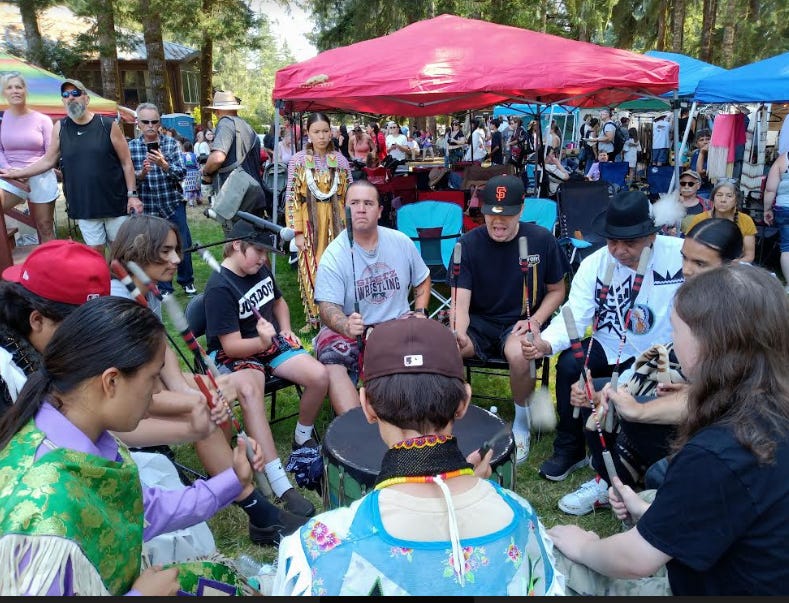






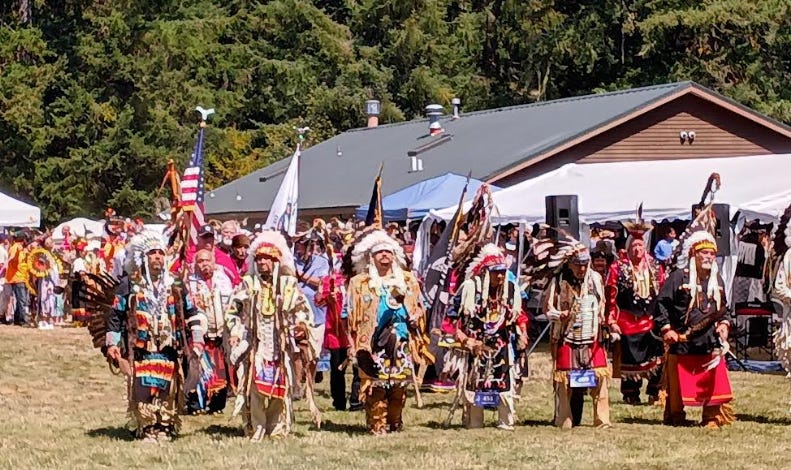


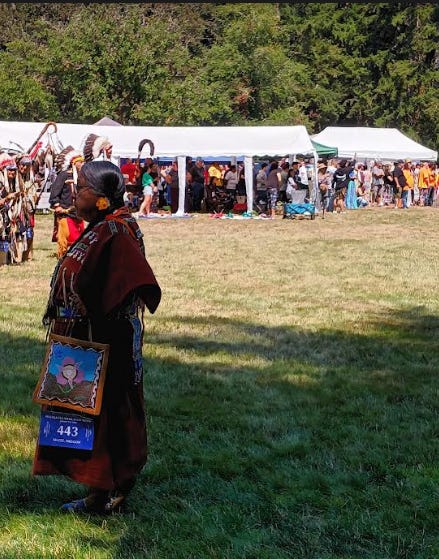

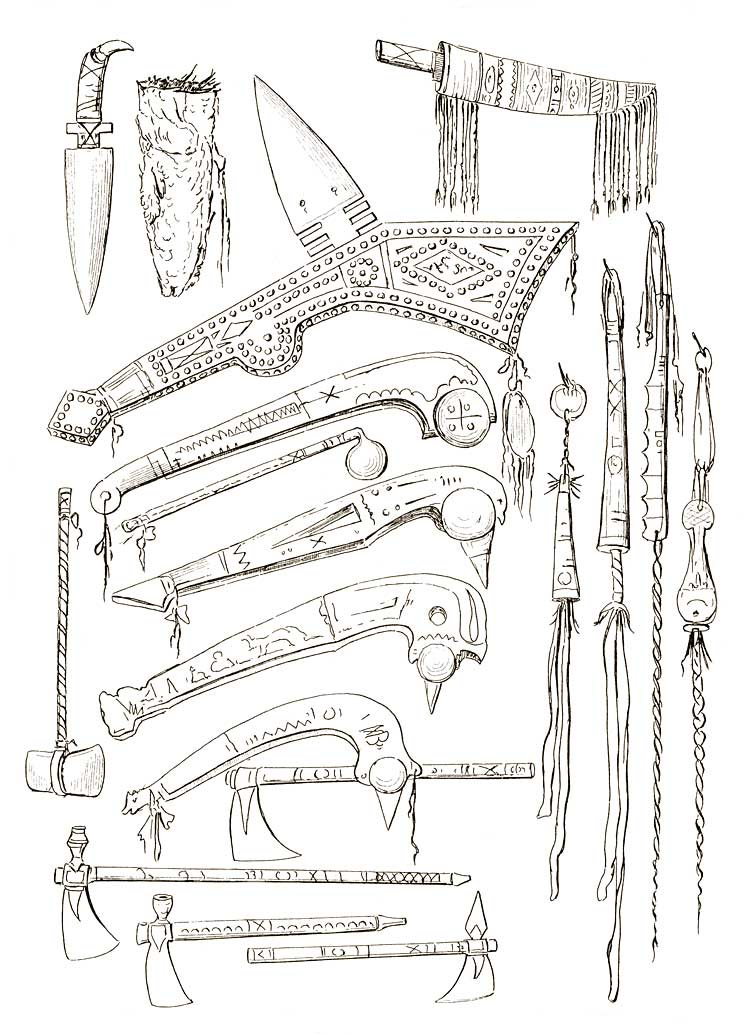













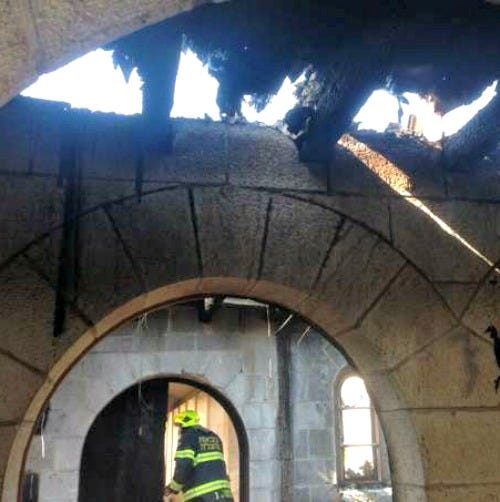





And soy respite is fucking over as the cunts of the world continue deaths of millions by a billion cuts .... Death to all banksters
https://dailyhodl.com/2024/08/10/jpmorgan-chase-bank-of-america-and-wells-fargo-under-federal-investigation-over-hundreds-of-millions-of-dollars-in-scams-and-fraud-on-instant-payments-platform-zelle/